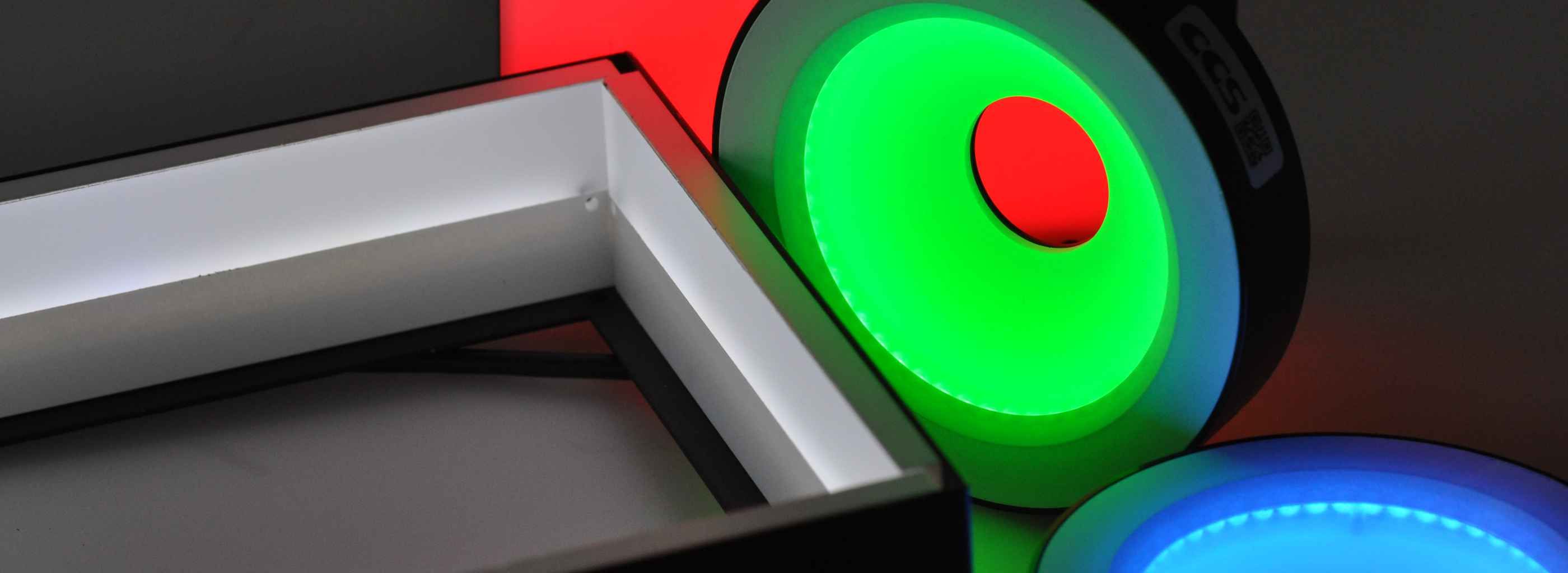
Illumination
Coloured light & coloured objects
This means that colours with similar luminance values can be better separated in the grey image, with a red and a neighbouring green resulting in different shades of grey.

Daylight
Normal grey tones. Light colours appear light, dark colours are normally dark.

White LED
Normal grey tones. Light colours appear light, dark colours are normally dark.

Blue LED
Blue logo (top left) heavily lightened, all yellow, orange and red tones of the object become dark.
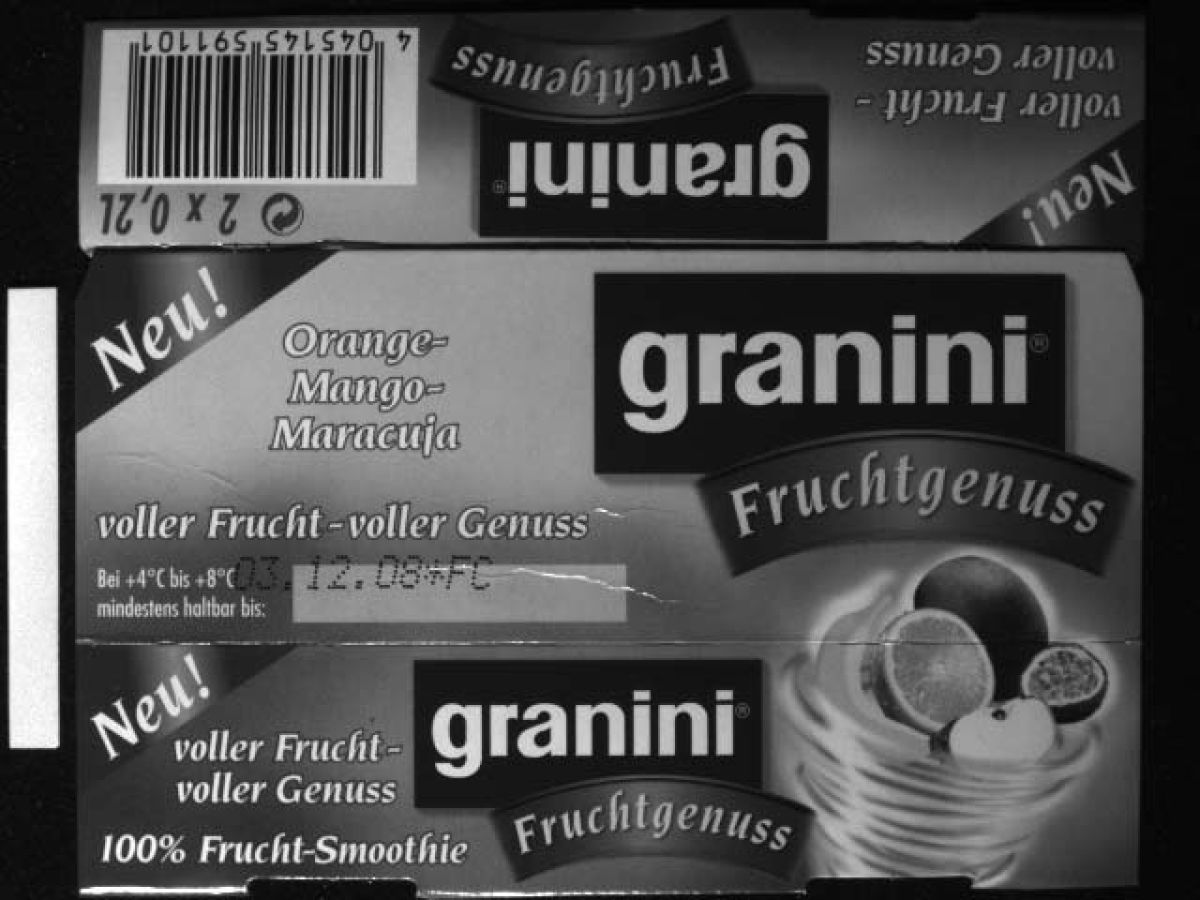
Green LED
Red areas around 'Granini' logo heavily darkened, 'Fruchtgenuss' logo slightly lighter, yellow-orange mid grey
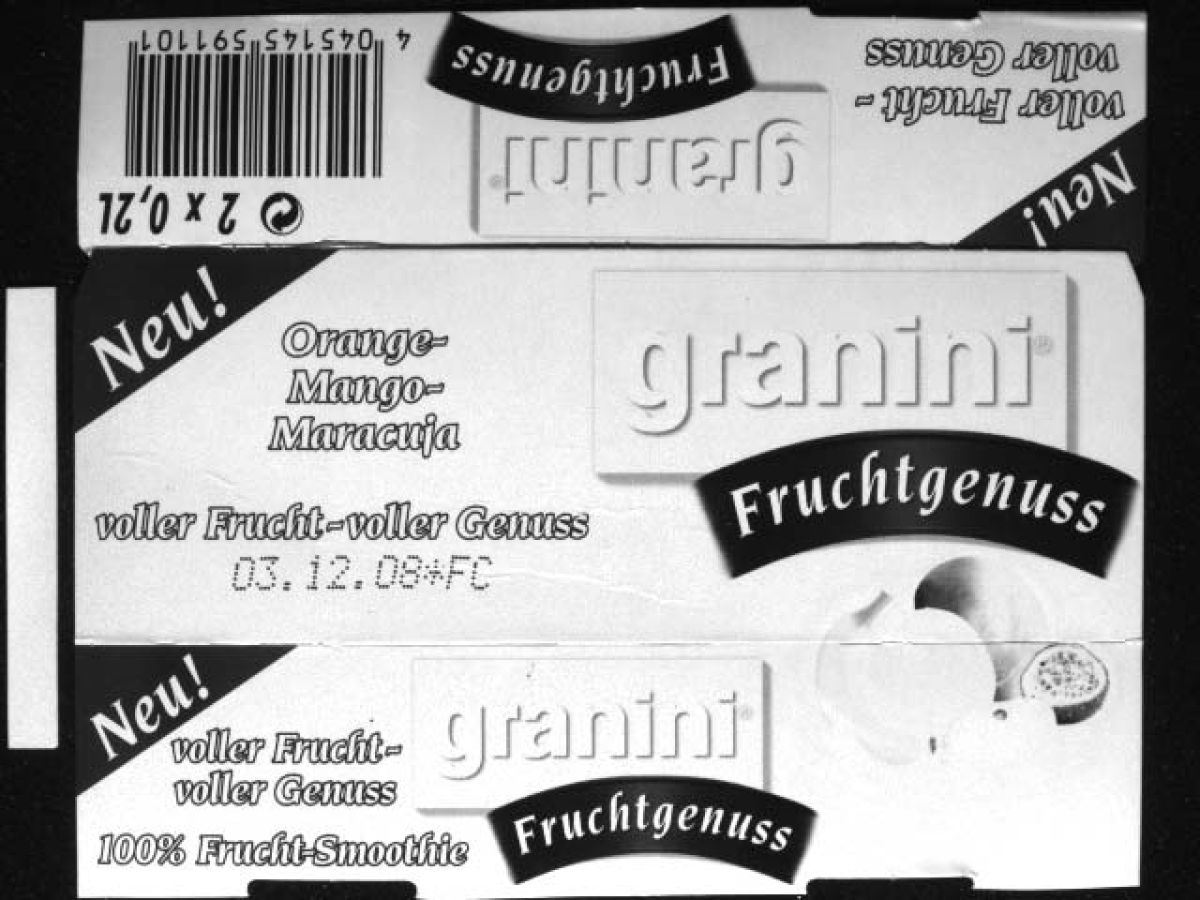
Red LED
Red and orange areas almost white, blue and green logos appear very dark.
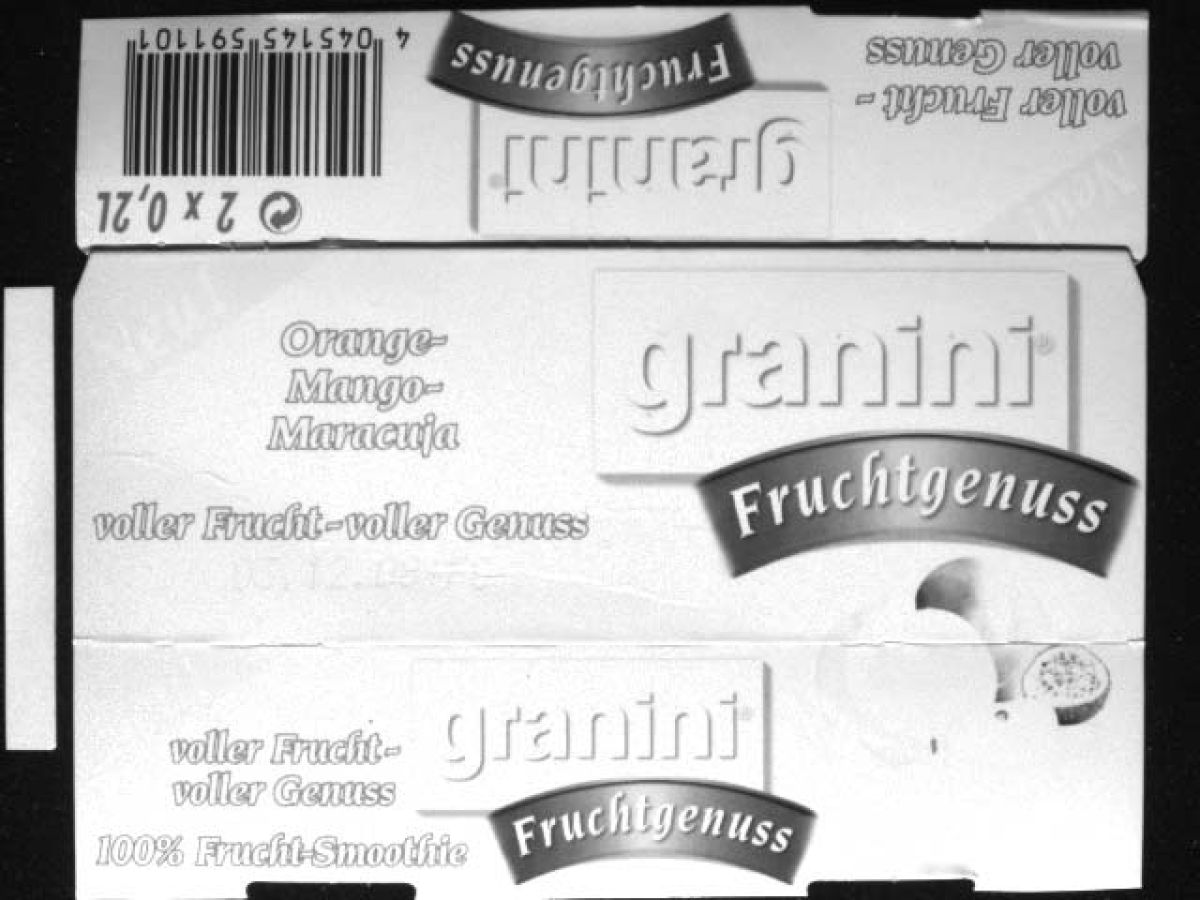
Infrared LED
Except for green logo with a high proportion of black disappeared almost anything, even blue logo and expiration date
Additive colour mixing - mixing coloured light
If you illuminate a surface on the wall with three light sources, a red, a green and a blue spot, you will get white light in the overlapping area of the spots.
This can also be explained using the spectrum of coloured LEDs shown below: If you combine the blue, green and red spectra, you get a fairly complete spectrum of all wavelengths, which is white light.
This principle of mixing light is called the RGB model (every monitor works on this principle). We speak of light colours.
Use of coloured LEDs
All types of coloured light can be used for illumination. In industrial image processing, however, the use of LED lighting has become widely accepted. The emission spectra are typically quite sharply banded, which has practical advantages. Neighbouring wavelength ranges can be blocked very well by filters. The reverse is also of practical importance: Filters allow the coloured light to pass through and block any other extraneous light that might interfere.
Additive Farbmischung

Typical spectra of coloured LEDs
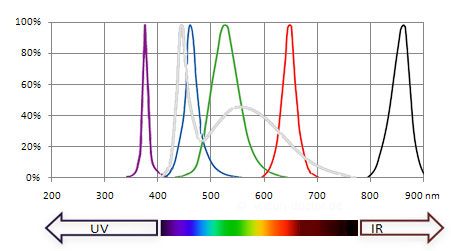
Subtractive colour mixing - colours and dyes in test objects
The components to be tested are often coloured. The component is coloured using pigments or dyes.
In addition to colour filters that can be screwed onto a camera lens, printing inks also work according to this principle. Mix yellow and magenta and you get red, mix magenta and cyan and you get blue, and so on. The body does not reflect all of the incident light, but subtracts some of it. These are called body colours.
The colour model is called the CMY(K) model after the colours cyan, magenta and yellow. (The colour K=Key stands for black, which must be added during printing to obtain very dark colours and black tones.)
Additive Farbmischung
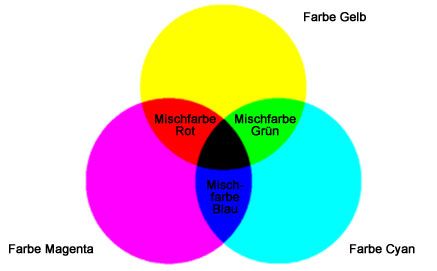
Coloured light and coloured objects
In der industriellen Bildverarbeitung werden beide Effekte kombiniert. So kann mit farbiger Beleuchtung die komplementäre Körperfarbe abgedunkelt und die gleiche Körperfarbe aufgehellt werden.
Example 1:
A red imprint absorbs almost all colours except red when illuminated with white light. It reflects them back to the viewer. If red illumination is used, no red light is absorbed, i.e. almost the entire light quantity is reflected to the camera. The red imprint appears very bright.
Example 2:
A red imprint absorbs almost all colours except red when illuminated with white light. It reflects them back to the viewer. If green illumination is used, almost the entire light quantity is absorbed by the red printing colour. The red imprint appears very dark.
Example 3:
Two metals of the periodic system and also some alloys are coloured. Gold and gold-coloured objects (e.g. brass), for instance, may appear darker when using blue light and can be differentiated from other silver-coloured metals. Copper can be made darker using green or blue light according to the principle of subtractive colour mixing.
Need machine vision lighting ?
Vision-Doctor.com is a private, independent, non-commercial homepage project and not a technology provider or system integrator. Suitable technologies and further professional support can be obtained from the companies & partners listed below.
If necessary, I will be happy to provide a quick recommendation, contacts and brief information.















